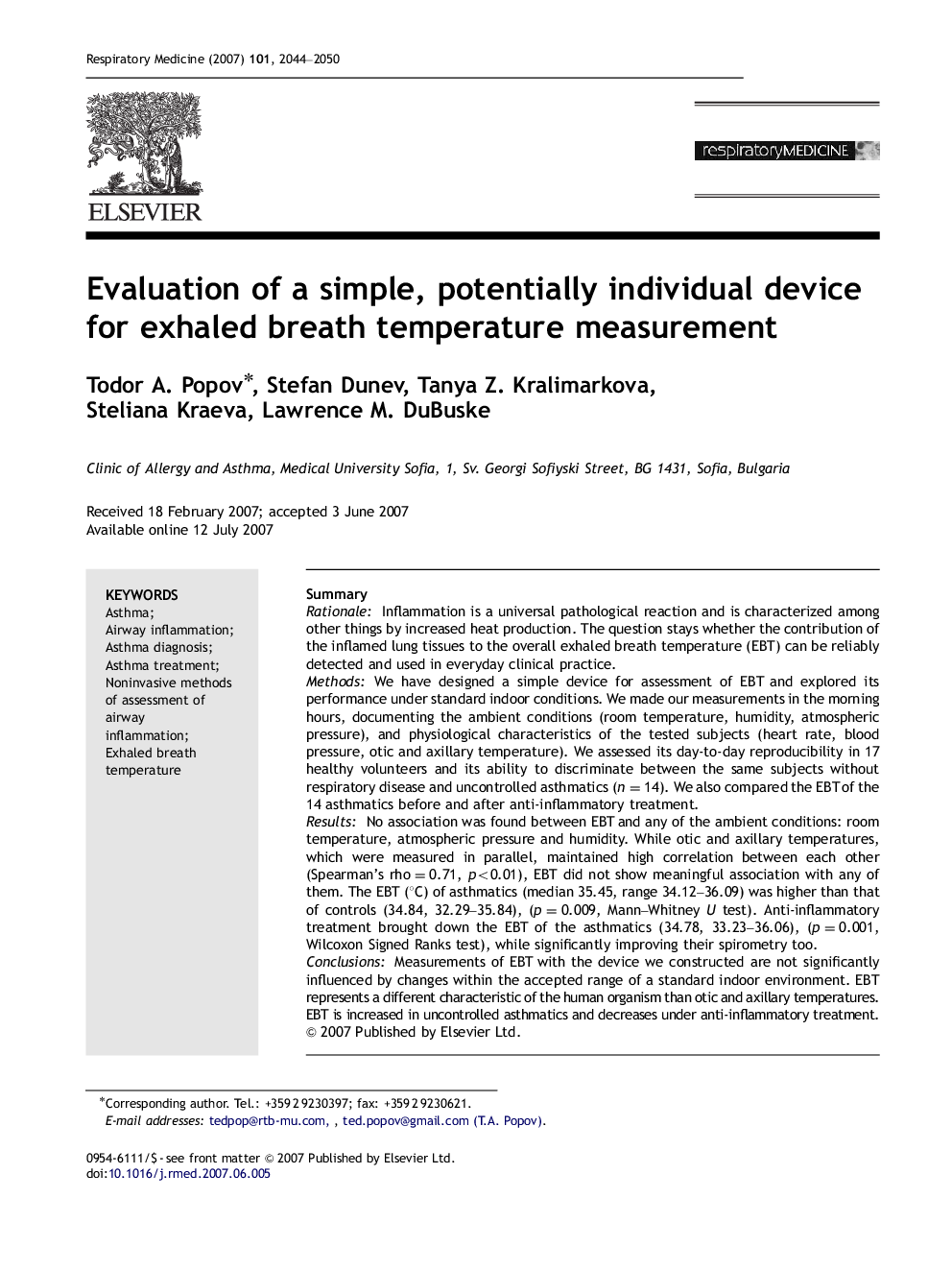| Article ID | Journal | Published Year | Pages | File Type |
|---|---|---|---|---|
| 4211492 | Respiratory Medicine | 2007 | 7 Pages |
SummaryRationaleInflammation is a universal pathological reaction and is characterized among other things by increased heat production. The question stays whether the contribution of the inflamed lung tissues to the overall exhaled breath temperature (EBT) can be reliably detected and used in everyday clinical practice.MethodsWe have designed a simple device for assessment of EBT and explored its performance under standard indoor conditions. We made our measurements in the morning hours, documenting the ambient conditions (room temperature, humidity, atmospheric pressure), and physiological characteristics of the tested subjects (heart rate, blood pressure, otic and axillary temperature). We assessed its day-to-day reproducibility in 17 healthy volunteers and its ability to discriminate between the same subjects without respiratory disease and uncontrolled asthmatics (n=14). We also compared the EBT of the 14 asthmatics before and after anti-inflammatory treatment.ResultsNo association was found between EBT and any of the ambient conditions: room temperature, atmospheric pressure and humidity. While otic and axillary temperatures, which were measured in parallel, maintained high correlation between each other (Spearman's rho=0.71, p<0.01), EBT did not show meaningful association with any of them. The EBT (°C) of asthmatics (median 35.45, range 34.12–36.09) was higher than that of controls (34.84, 32.29–35.84), (p=0.009, Mann–Whitney U test). Anti-inflammatory treatment brought down the EBT of the asthmatics (34.78, 33.23–36.06), (p=0.001, Wilcoxon Signed Ranks test), while significantly improving their spirometry too.ConclusionsMeasurements of EBT with the device we constructed are not significantly influenced by changes within the accepted range of a standard indoor environment. EBT represents a different characteristic of the human organism than otic and axillary temperatures. EBT is increased in uncontrolled asthmatics and decreases under anti-inflammatory treatment.
